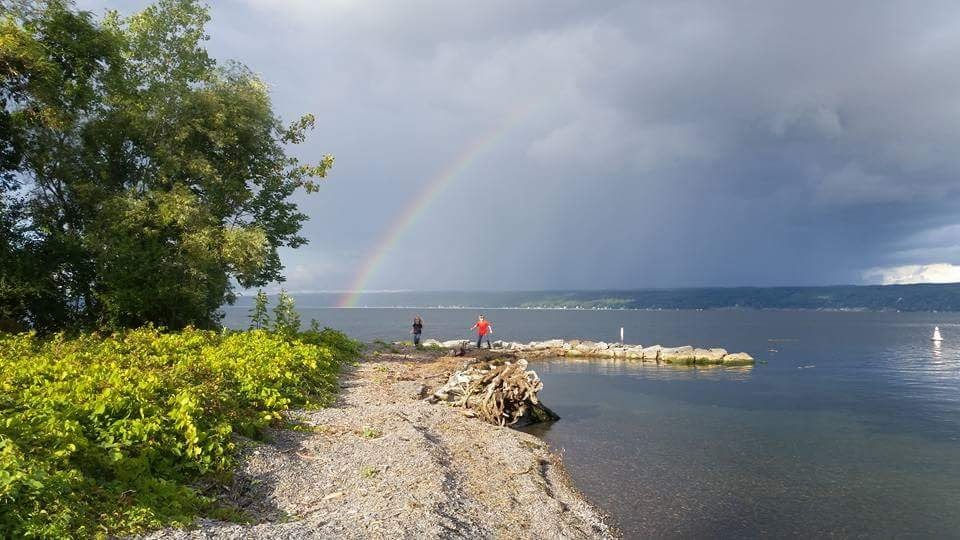Fossil Hunting at Seneca Lake
- by Nikki Chase
- Aug 11, 2018
- 2 min read

Seneca Lake is well known as the largest and deepest of the Finger Lakes, but lesser known is the abundance of marine fossils to be found on the north half of the lake. About 385 million years ago, a shallow sea covered most of western and central New York during the Middle Devonian. Located near the equator, a coral reef community thrived until the Late Devonian mass extinction about 375 - 360 million years ago. Animals that were common during that time period were brachiopods, gastropods, bivalves, corals, trilobites, shelled cephalopods and crinoids (Sea Lilies).
Fossil hunting is one of my favorite hobbies. For me it is like a treasure hunt! Living in Dundee, I frequent spots from Severne Point to Kashong creek along Route 14 which runs along the west side of the lake. Of all the places along the west side that I go to, Severne Point is my favorite hunting spot. Located near Himrod, NY, Severne Point is a public beach with a boat launch. Swimming is prohibited but the beach is rich with fossils eroded out of the Hamilton group and the Tully limestone marking the space between the middle and late Devonian. The most common animals found along the beach are Rugosa Corals (Horn corals), brachiopods, and crinoid ossicles that look like little circles with perfect stars in the middle. Every once in awhile a gastropod (snail) or trilobite (arthropod) can be found. Sometimes fossils are found with pyrite or calcite on them.
There is nothing better than spending a day at the lake looking for fossils, feeling the breeze, listening to the waves and admiring the beautiful remnants of the past, that have been hidden for millions of years, laying on the beach.
If you are interested in looking for fossils in the Finger Lakes area, I recommend the books “Field Guide to the Devonian Fossils of New York” by Karl A. Wilson and “Roadside Geology of New York” by Bradford B. Van Diver. Also check out the Fossil Guy’s website at https://www.fossilguy.com/sites/18mile/18_col.htm








































Comments